How to Build an Affiliate Marketing Website in 8 Easy Steps
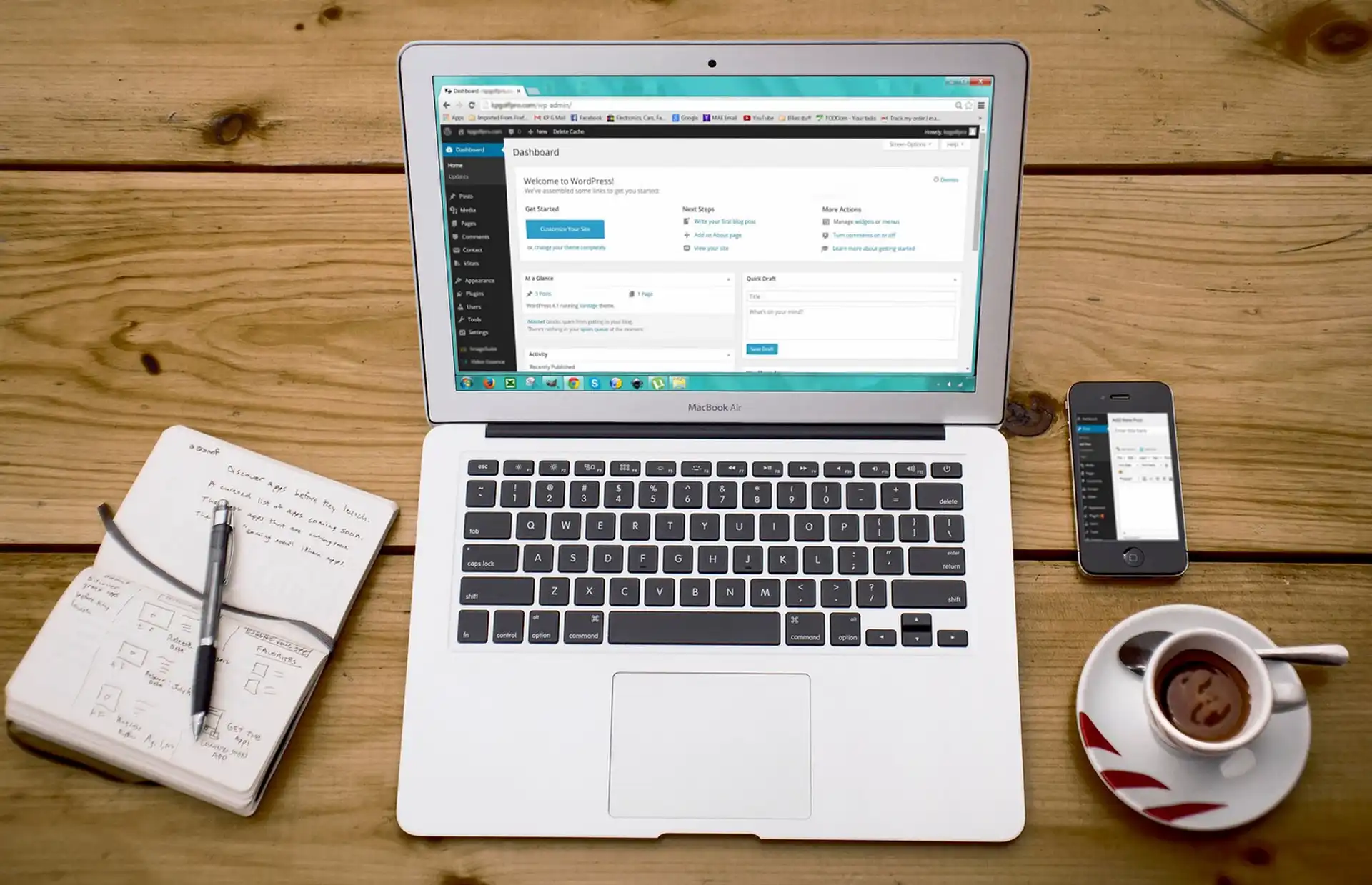
Imagine waking up to commission notifications—money rolling in while you sleep. That’s the power of affiliate marketing when done right.
But if you’re relying only on social media, you’re walking on shaky ground. One algorithm change, one account ban, and your income can vanish overnight.
A website isn’t required to make money with affiliate marketing, but it’s your best shot at long-term success. Unlike social media, where platforms control your reach, a website is yours.
Read Also: Do You Need a Website to Start Affiliate Marketing? Here is My Take
It ranks on Google, builds trust, and works for you 24/7. It’s the difference between chasing short-term wins and building something that pays you for years.
Now, if the thought of building a website sounds overwhelming, don’t worry. You don’t need to be a tech wizard.
In this guide, I’ll walk you through eight simple steps on how to build an affiliate marketing website that actually makes money.
Key Takeaways
- An affiliate marketing website gives you full control over your business and income.
- Choosing the right niche is essential for long-term success.
- A strong domain name and reliable hosting improve website performance.
- High-quality content and SEO drive free, organic traffic.
- Monetization works best with trusted, high-paying affiliate programs.
- Consistent traffic growth comes from SEO, social media, and email marketing.
- Tracking and optimizing conversions increases affiliate earnings.
- Scaling with automation and outsourcing helps grow your business faster.
Why You Need an Affiliate Marketing Website
A website isn’t just a nice-to-have in affiliate marketing. It’s your home base. Social media accounts and third-party platforms can vanish overnight.
But when you own a website, no one can shut you down. You make the rules. You decide what gets published. No worrying about bans, random algorithm changes, or losing everything because some platform changed its mind.
Then there’s SEO. A website lets you rank on Google, bringing in free traffic for years. A single well-written post can pull in visitors long after you’ve hit publish. No constant posting, no begging for engagement—just steady, organic traffic. That’s money in the bank.
Trust matters too. People take websites seriously. Anyone can spam links on social media, but a well-structured site tells visitors you know your stuff. It builds authority. When people trust you, they buy from your links without hesitation.
And let’s talk money. A website gives you more ways to earn. You’re not stuck with just affiliate links. You can run ads, get sponsorships, sell digital products—whatever makes sense. It’s not just an affiliate site anymore; it’s a business.
Bottom line? If you want control, credibility, and long-term income, build a website. It’s the smartest move you can make.
Steps to Build an Affiliate Marketing Website
Starting as an affiliate publisher unlocks countless opportunities, and success begins with following a few simple steps. Learn the eight key steps to building a website and setting yourself up for affiliate marketing success.
- Choose a Profitable Niche – Find a niche with high demand and good payouts.
- Pick a Domain Name & Hosting – Get a memorable domain and reliable hosting.
- Set Up & Customize Your Website – Make your site look professional and user-friendly.
- Create High-Converting Content – Write content that ranks, engages, and sells.
- Optimize Your Website for SEO & Conversions – Drive free organic traffic and increase sales.
- Monetize with the Right Affiliate Programs – Choose programs that pay well and fit your niche.
- Drive Traffic to Your Website – Use SEO, social media, and other traffic strategies.
- Scale Your Affiliate Business for Long-Term Success – Automate, expand, and grow your income.
Follow these steps, and you’ll have more than just a website—you’ll have a real income stream. Let’s explain them in detail.
Step 1: Choose a Profitable Niche
Picking the right niche is everything. Get it wrong, and you’ll waste time on something that barely makes money. Get it right, and you’ve got a site that earns for years.
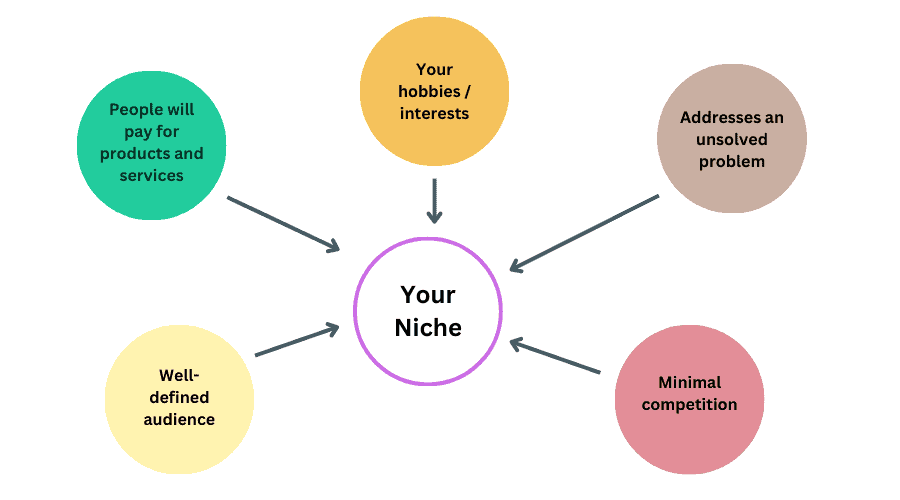
Find a High-Demand, Low-Competition Niche
Look for topics people care about and are willing to spend money on. Fitness, personal finance, tech gadgets—those are always hot. But big niches mean big competition.
You need a sub-niche. Instead of “fitness,” go for “home workouts for busy parents.” Instead of “tech,” try “budget-friendly smart home gadgets.”
Evergreen vs. Trending Topics
Evergreen topics stay relevant. Weight loss, making money online, relationships—these never fade. Trending topics, like AI tools or crypto, can blow up fast but also crash.
A mix of both works best. Build your foundation on evergreen content, then sprinkle in trends to ride the wave when it hits.
Check Affiliate Programs for Commission Potential
Not all niches pay well. Some products have tiny commissions, while others are goldmines. Amazon’s affiliate program is popular, but it pays peanuts.
Software, finance, and luxury goods? Higher commissions. Check networks like ShareASale, CJ Affiliate, or Impact. See what’s out there before committing.
Validate with Keyword and Competitor Research
Don’t guess—research. Use free tools like Ubersuggest or paid ones like Ahrefs. Search for keywords with high search volume and low competition. Look at competitors. Are they ranking with weak content? If yes, that’s your chance. If they dominate with powerhouse articles, rethink your angle.
Your niche sets the stage. Choose wisely, and everything else falls into place.
Recommended Reading: How to Choose the Best Niche for Your Affiliate Marketing Business
Step 2: Pick a Domain Name & Hosting
Your domain name is your online identity. It should be easy to remember, brandable, and SEO-friendly. Short, simple, and relevant to your niche.
Avoid hyphens, numbers, or anything hard to spell. If your perfect domain is taken, get creative with slight variations.
To purchase a domain, first, create an account with Interserver.net. Then, log in. Once you’re logged in, refer to the video below for further demonstration.
Now, hosting. Cheap hosting can hurt your site’s speed and security. You have three main choices:
- Shared hosting – Cheapest, but slow and crowded. Works for beginners but not long-term.
- VPS hosting – More power and control. Good for scaling but needs some technical knowledge.
- Managed hosting – Best for speed, security, and hands-off management. Costs more but saves headaches.
For affiliate sites, Interserver, WPX Hosting, and Cloudways are solid choices. They’re fast, secure, and have great support. Speed matters—Google ranks faster sites higher.
I personally use Interserver for my sites. It’s affordable, reliable, and doesn’t play games with pricing. The performance has been solid, and the support team actually knows what they’re doing. If you want a hosting provider that won’t slow you down, it’s a great option.
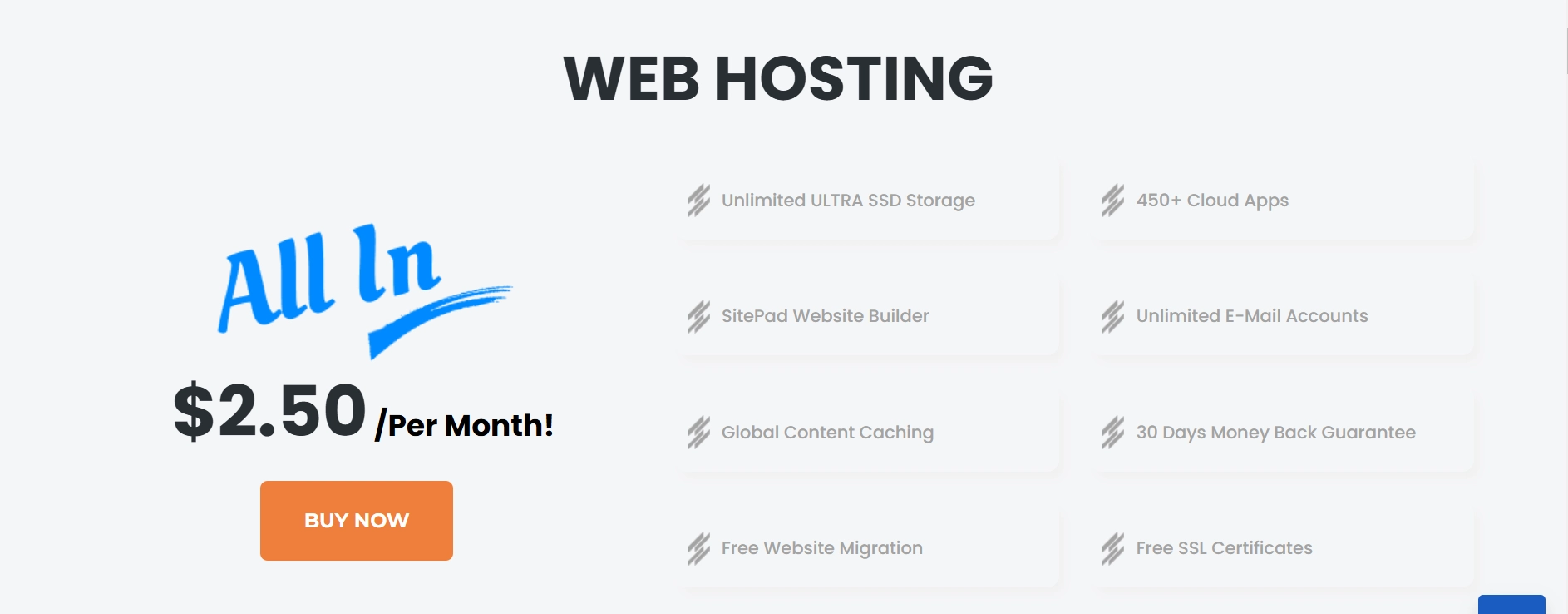
Once you’ve picked hosting, install WordPress. It’s free, easy to use, and packed with tools for SEO and customization. Most hosts have one-click installation, so no tech skills needed.
Get this part right, and you’ll avoid a lot of future headaches.
Step 3: Set Up & Customize Your Website
Now that you have your domain and hosting, it’s time to build your site. This part can be fun—or frustrating—depending on how you go about it. Keep it simple, and you won’t get stuck.
Choose a Fast, Mobile-Friendly WordPress Theme
Don’t overthink this. Pick a theme that loads fast and looks good on mobile. Visitors won’t wait around for a slow site. Astra, GeneratePress, and Kadence are solid choices. They’re lightweight, flexible, and easy to customize.
Install Must-Have Plugins
A fresh WordPress install is like an empty toolbox. You need the right tools to make it work. Start with these:
- SEO – Rank Math or Yoast (for search optimization).
- Speed – WP Rocket or LiteSpeed Cache (for faster loading).
- Security – Wordfence or iThemes Security (to keep hackers out).
- Backups – UpdraftPlus (because things break).
Install only what you need. Too many plugins slow down your site.
Create the Essential Pages
These aren’t optional. Every legit site needs them:
- Home – The first thing visitors see. Make it clear who you are and what you offer.
- About – Build trust. Share your story, but keep it relevant.
- Contact – A simple form so people can reach you.
- Privacy Policy – A must for legal reasons. Use Termly to generate.
Organize Your Site for Easy Navigation
Messy websites confuse people. Keep menus simple. Put the most important links at the top. If visitors can’t find what they need, they’ll leave.
Stick to clean layouts. Avoid clutter. Use clear headings and short paragraphs. The easier your site is to use, the longer people stay—and the more likely they are to click your affiliate links.
Set it up right from the start, and you won’t have to fix it later.
Step 4: Create High-Converting Content
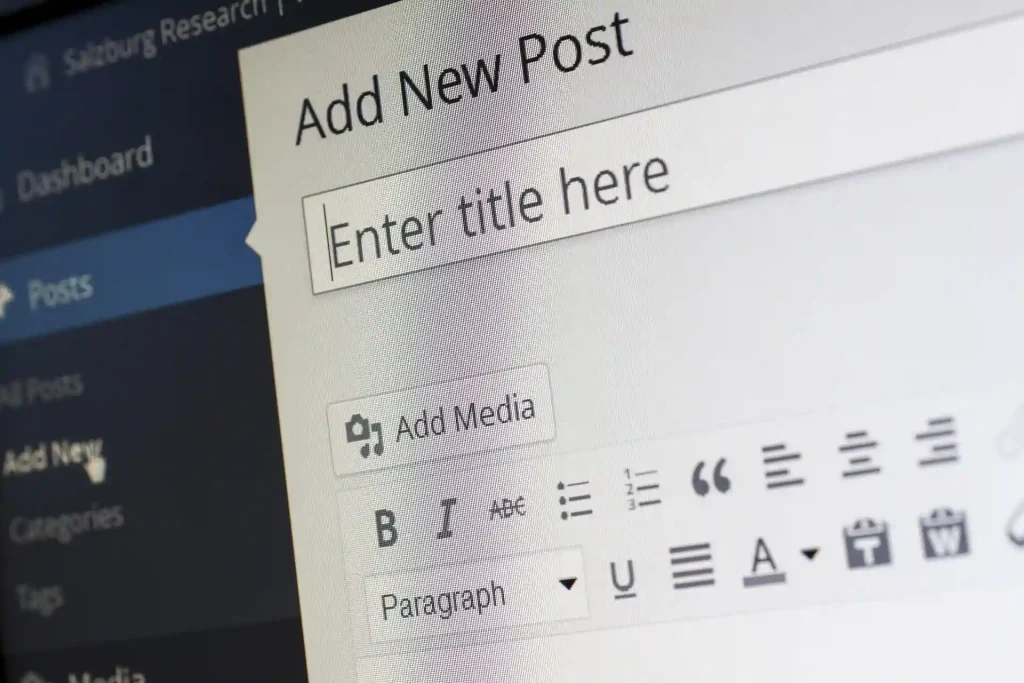
Good content isn’t just words on a page. It’s what convinces people to trust you—and click those affiliate links.
Write SEO-Optimized Articles
If you want free traffic, Google needs to like your content. That means writing reviews, comparisons, and guides packed with keywords people actually search for.
But don’t stuff them in like a robot. Work them in naturally. If it doesn’t sound like something you’d say out loud, rewrite it.
Hook Readers with Strong Headlines & Introductions
People decide in seconds whether to keep reading or leave. A bland headline won’t cut it. Instead of “Best Laptops for Gaming,” try “The 5 Best Gaming Laptops (Tested & Ranked by a Pro).” Make it specific, clear, and interesting.
Your introduction should do two things: grab attention and set expectations. Start with a bold statement, a question, or a quick story.
For example:
“I’ve tested dozens of gaming laptops. Some are amazing. Others? Total garbage. Let’s talk about the ones actually worth your money.”
That’s more engaging than: “In this article, we will discuss gaming laptops.”
Use Images, Videos, and Infographics
Walls of text scare people away. Break things up with visuals. Show product images, comparison charts, or short videos.
People process visuals faster than text, and they help build trust. If you’re reviewing a product, show proof you’ve used it. Screenshots, unboxing photos, or even a quick demo video can boost conversions.
Add Strong CTAs (Call-to-Actions)
Don’t assume readers will know what to do next. Tell them. After reviewing a product, add a clear CTA:
👉 “Click here to check the latest price on Amazon.”
👉 “This deal won’t last—grab yours before it’s gone.”
Make it natural, not pushy. Think of it like recommending a product to a friend. You wouldn’t just say, “This is great.” You’d say, “You should grab this while it’s on sale.” Same energy.
Remember high-converting content is about getting the right people to trust you—and act. Write naturally, make it easy to read, and always guide the reader toward the next step. That’s how you turn content into commissions.
Step 5: Optimize Your Website for SEO & Conversions
You can have the best content in the world, but if no one finds it, what’s the point? That’s where SEO comes in.
Find Keywords That People Actually Search For
Start with keyword research. You need to know what people type into Google when looking for content like yours.
Use Ubersuggest or even Google’s autocomplete. Look for terms with decent search volume and low competition. Target keywords that match what your audience actually needs.
Nail Your On-Page SEO
Every page should have a clear focus keyword. Put it in your title, meta description, and first 100 words. But don’t force it—Google is smart. Internal links help too. Link to related content on your site to keep visitors engaged and boost rankings.
Get Quality Backlinks
Google loves websites with authority. How do you build that? Backlinks. Guest posting works well. Find websites in your niche and pitch them valuable content. Outreach takes time, but a few strong links can push your rankings up fast.
Track, Test, and Improve
Set up Google Analytics and heatmaps (like Hotjar). This shows you where people click, where they drop off, and what’s working. If a page isn’t converting, tweak the layout, test different CTAs, and keep adjusting. SEO isn’t a “set it and forget it” game.
Your goal? Get visitors to stay longer, click more, and take action. SEO brings traffic, but conversions make you money. Optimize for both.
Recommended Reading: Best SEO Strategies for Affiliate Websites: How to Get Free Organic Traffic
Step 6: Monetize with the Right Affiliate Programs
This is where the money starts rolling in—if you do it right. Picking the wrong programs can sink your site before it even takes off. Let’s make sure that doesn’t happen.
Find High-Ticket and Recurring Commission Programs
Selling a $10 product for a tiny commission won’t pay the bills. Instead, focus on high-ticket items and programs that pay you monthly. Think software subscriptions, premium courses, or expensive gear in your niche. These give you better payouts with less effort.
A single $500 commission beats grinding for 100 small sales. And recurring commissions? That’s passive income. Sell once, get paid for months (or years).
Recommended Reading:
1. Top 8 High-Paying Affiliate Programs To Boost Your Income
2. 15 Best SaaS Affiliate Programs That You Need to Join
Join Trusted Affiliate Networks
You need reliable programs that actually pay on time. Some of the best networks include:
- Amazon Associates – Huge selection, but low commissions. Best for volume-based niches.
- ShareASale – Solid mix of digital and physical products. Great for beginners.
- CJ Affiliate – High-quality brands with better payouts.
- Impact & PartnerStack – Ideal for SaaS and subscription-based products.
Don’t just sign up everywhere. Pick programs that fit your audience. If they trust you, they’ll buy.
Recommended Reading: 15 Best Affiliate Networks That Actually Pay: (My Personal Picks After Years in the Game)
Promote Products That Fit Your Audience
Your readers aren’t looking for random junk. They want solutions. Push the wrong offers, and they’ll stop clicking your links. Find products they actually need.
Example: If your site is about home workouts, don’t push fancy gym equipment. Sell resistance bands, online training programs, or supplements they’d actually use.
Avoid Common Mistakes That Kill Conversions
Even the best affiliate program won’t work if you mess up the promotion. Here’s what to avoid:
- Too many links – Don’t spam. Keep it natural.
- Weak calls to action – Tell them why they need the product.
- Promoting bad products – One bad recommendation kills trust fast.
- Ignoring SEO – No traffic means no sales.
Your goal isn’t just to make money. It’s to build trust. Get that right, and the sales will come.
Step 7: Drive Traffic to Your Website
Your site is live, but without visitors, it’s useless. Traffic is everything. Here’s how to get it.
Master SEO for Long-Term Growth
SEO is your best friend. It’s free, and it brings in people actively searching for what you offer.
- Find the right keywords – Use tools like Ahrefs or Google Keyword Planner. Target low-competition ones first.
- Write quality content – Google rewards helpful, well-written posts. Don’t stuff keywords. Just be useful.
- Optimize on-page SEO – Use proper headings, short URLs, and internal links. Fast-loading pages help too.
- Get backlinks – Reach out to bloggers, answer HARO queries, or guest post on related sites.
SEO takes time, but once it kicks in, it delivers traffic on autopilot.
Use Social Platforms for Extra Reach
Not all traffic has to come from Google. Platforms like Pinterest, YouTube, and Quora can send thousands of visitors.
- Pinterest – Perfect for niches like DIY, travel, and finance. Make eye-catching pins and link them to your site.
- YouTube – Create short, helpful videos. Add links in the description. Even basic videos can rank.
- Quora – Answer questions related to your niche. Give value, then drop a link where it fits.
These platforms work because people there are already looking for info. Meet them where they are.
Paid Ads: A Shortcut If You Have Budget
SEO and social take time. If you want faster results, ads can help.
- Google Ads – Great for targeting search intent. Can get pricey but converts well.
- Facebook Ads – Better for impulse buys or capturing email leads. Test small first.
- Native Ads – Sites like Outbrain and Taboola put your content on big websites. Works well for broad niches.
Ads aren’t magic. Track your numbers, tweak your campaigns, and don’t burn cash chasing clicks that don’t convert.
Build an Email List for Long-Term Success
Traffic is great, but an email list keeps visitors coming back.
- Offer a freebie – A PDF guide, discount, or exclusive tips work well.
- Use popups or forms – Make signing up easy but not annoying.
- Send regular emails – Helpful content, product reviews, and personal updates build trust.
Recommended Reading: How to Build a Strong Email List for Your Affiliate Marketing Business
Email is one of the few things you control. No algorithm changes, no random traffic drops. Just direct access to your audience.
No traffic, no money. SEO, social, ads, and email all play a role. Pick what fits your budget and patience level. Keep testing, keep learning, and keep driving people to your site.
Recommended Reading: Best 15 Ways to Drive Traffic to Your Affiliate Links (Tested and Proven)
Step 8: Scale Your Affiliate Business for Long-Term Success
Once your website is making money, it’s time to think bigger. You don’t want to stay stuck in the same spot while others pass you by. Scaling isn’t about working harder—it’s about working smarter.
Test Everything
Small changes can mean big money. A/B test your headlines, content, and call-to-action buttons. See what works best and stick with it. Sometimes, a simple wording change can double your conversions.
Automate and Save Time
Repetitive tasks eat up your day. Automate email responses, social media posts, and basic customer interactions. Use tools that schedule posts and track affiliate links.
The less time you spend on busywork, the more time you have for real growth.
Don’t Do It All Yourself
You can’t scale if you’re drowning in work. Hire writers to create content, link builders to improve SEO, and social media managers to keep engagement high. Focus on strategy, not every little detail.
Expand Your Reach
One website is great, but multiple websites mean more income streams. Once you have a system that works, replicate it. Try new niches, build more sites, and diversify. If one income source dries up, you have others to keep you going.
Scaling isn’t about adding stress—it’s about finding smarter ways to grow. The right moves now will keep your business running strong for years.
Conclusion
Building an affiliate marketing website isn’t just about setting up a site and adding links. It’s a process that requires strategy, consistency, and a willingness to adapt. The steps are simple, but success comes from execution.
First, you start with a solid foundation—choosing the right niche and domain. Your niche determines your audience and income potential, so it’s not a decision to rush. A well-chosen niche makes everything else easier.
Then, you build a website that people trust. A clean design, fast loading speed, and mobile-friendly layout keep visitors engaged. Quality content keeps them coming back. Reviews, comparisons, and in-depth guides make your site valuable, not just another affiliate page pushing products.
SEO is the key to free, long-term traffic. Keyword research, optimized content, and strong backlinks help your site rank higher. You don’t need to be an expert overnight, but learning SEO basics will make a huge difference.
Monetization isn’t just about slapping links everywhere. You need a strategy—placing links naturally, using clear call-to-action buttons, and promoting high-converting products. The goal is to guide visitors toward making informed purchases, not to bombard them with ads.
Scaling takes it to the next level. A/B testing, automation, outsourcing, and expanding into multiple sites or niches help you grow without burning out. Smart scaling turns a side hustle into a full-time business.
Success in affiliate marketing doesn’t come overnight. It takes effort, patience, and a willingness to keep learning.
But if you stick with it and follow these steps, you’ll have a website that not only makes money but keeps growing year after year.
Frequently Asked Questions
How much does it cost to start an affiliate marketing website?
You can start with as little as $50 to $100. The main costs include a domain name ($10–$15 per year), web hosting ($5–$15 per month), and a WordPress theme (free or paid). If you invest in premium tools like SEO plugins, email marketing software, or paid content, costs may go up, but they’re optional in the beginning.
How long does it take to make money from an affiliate website?
It depends on your effort and strategy. Most new affiliate websites take 3 to 6 months to get organic traffic and 6 to 12 months to see steady income. If you rely on SEO, expect a longer wait. If you use paid ads or social media marketing, results may come faster.
Do I need to be a tech expert to build an affiliate website?
No. WordPress makes it easy to build a website without coding skills. Most hosting providers offer one-click WordPress installations, and there are plenty of beginner-friendly themes and plugins to customize your site. If you can follow tutorials and experiment a little, you’ll be fine.
How do I choose the best affiliate programs?
Look for programs with high commissions, reliable payouts, and products that match your niche. Popular networks like Amazon Associates, ShareASale, and CJ Affiliate offer a wide range of products. Also, check if the brand has a strong reputation and good conversion rates before promoting.
Can I build multiple affiliate websites at the same time?
It’s better to focus on one site first. Once it’s making money and running smoothly, you can expand. Managing multiple sites too early can slow your progress and spread your efforts too thin. Master one, then scale.

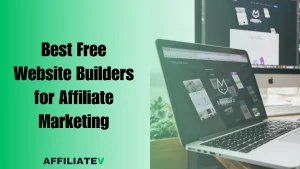
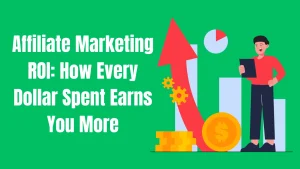
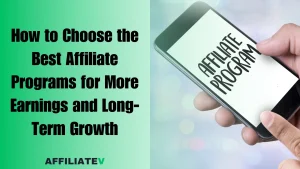
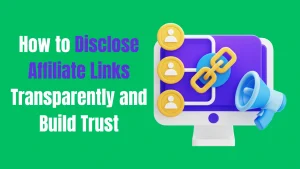
Fantastic site Lots of helpful information here I am sending it to some friends ans additionally sharing in delicious And of course thanks for your effort